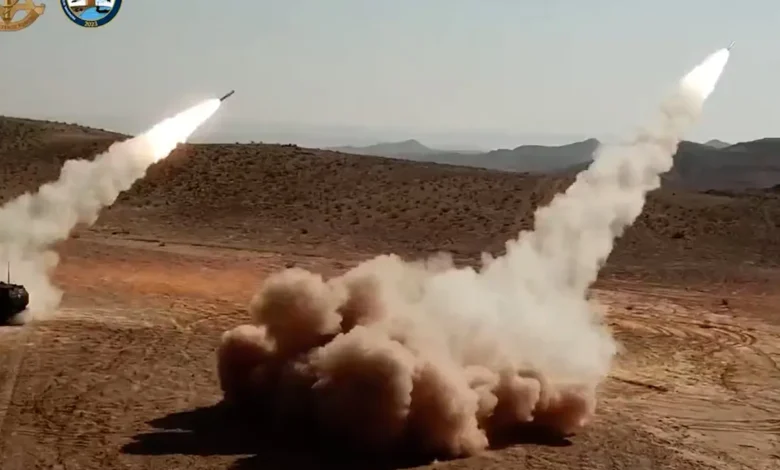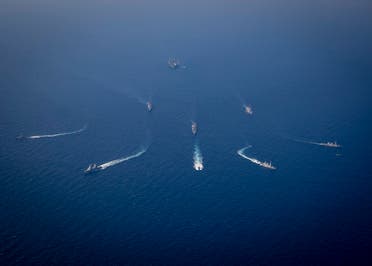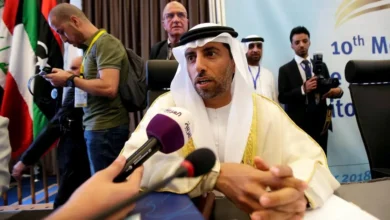New US military strategy on display during ‘largest ever’ joint exercise with Israel

Last week, the joint military drills between the US and Israel sent a strong signal to Iran that the countries are prepared to counter any malign activities carried out by Tehran or its proxies. But Juniper Oak 23.2 was about more than demonstrating Washington’s “ironclad” commitment to Israel’s security, according to officials.
The US is looking to alter the way it intervenes in areas of conflict and war zones, which was displayed during last week’s exercise that the Pentagon said was the largest of its kind in history.
With around 6,400 American troops and more than 140 aircraft, including B-52s, F35s, F15s, F16s, High Mobility Rocket Artillery Systems (HIMARS), Multiple Launch Rocket Systems (MLRS), and long-range bombers, the drill had three main messages, a senior US defense official said.
“Increasingly, we want to shift to a posture whereby we still have a significant presence that’s sustainable in the region, but we are able to surge dynamically forces into the region when we have indications and warnings of a threat,” the official said.
In other words, the US is looking to move away from deploying thousands of troops into a country or battlefield, as was the case in Iraq and Afghanistan, and looking towards the strategy of dynamic force employment, or DFE.
DFE was described in the 2018 National Defense Strategy (NDS) as allowing the Defense Department to “more flexibly use ready forces to shape proactively the strategic environment while maintaining readiness to respond to contingencies and ensure long-term warfighting readiness.”
Last year’s NDS did not mention DFE but said the Pentagon would explore “force employment concepts and capabilities that degrade adversary power projection while weighing crisis stability and escalation risk.”
The DFE strategy would allow the US to rapidly send forces on a mission for a limited period and, once completed, return.
But to do so, the US needs to be able to fall in on partners who are highly interoperable and “already plugged in and integrated into our networks,” the defense official said.
Last week’s exercise demonstrated that the US and Israel can already implement this strategy. The official said that Juniper Oak was put together in a “couple of months,” whereas one to two years of planning are typically needed for drills of this nature.
However, DFE comes with certain risks, said Gen. Frank McKenzie, the former commander of the US Central Command (CENTCOM).
“There’s vast potential friction associated with these types of things. You can’t always count on forces getting there as quickly as you’d like, particularly if the deployment is contested. That would be very hard to do,” Gen. Frank McKenzie said.
Nevertheless, Gen. McKenzie believes it is a good idea. “I think it gives the secretary a lot more arrows in his quiver to respond more flexibly.”
The secretary of defense is the only person that has the authority to move forces around at his direction as part of DFE, McKenzie noted.
US military posture remains steady
Iran was not the only adversary watching the live-fire exercise last week, although Pentagon Press Secretary Brig. Gen. Pat Ryder said the drills were not meant to be oriented around “any single adversary or threat.”
Russia and China were also being sent an indirect message, according to the senior US defense official, who spoke to Al Arabiya English on condition of anonymity.
At a time when the US is focused on supporting Ukraine’s fight back against Russia’s invasion and reclaiming captured territories, the threat of China invading Taiwan remains a strong possibility.
The official said that the multi-domain nature of last week’s drills showcased the US military’s ability to quickly carry out a mission while upholding its commitments in Europe and the Indo-Pacific.
At the same time, the official added, Washington’s Arab and Gulf allies should see the drill as a further sign of the US’s commitment to their safety and security.
“What we need to make sure people understand is we are going to move forces in, [and] we are going to move forces out; but we can do that at a speed and scale so that people aren’t judging,” the official said.
That message is meant for allies and partners as well as adversaries, not to simply look at the number of troops in the region to determine the US military posture.
“What we’re trying to suggest is what we have now is just the tip of the iceberg of what we can bring to bear if necessary,” said the US defense official.

Asked at the start of Juniper Oak if there were any messages to US allies in the region, Brig. Gen. Ryder said: “It demonstrates the fact that the United States is a reliable partner, that we’re going to continue to work together to ensure the security and the stability of the region.”
Gen. McKenzie commended the Juniper Oak exercise and praised his successor, Gen. Erik Kurilla, and CENTCOM for their “really remarkable work.”
“The most important thing is to assure your partners in the region, assure the people you do the exercise with, and your other partners that you will remain a reliable ally,” he said.










